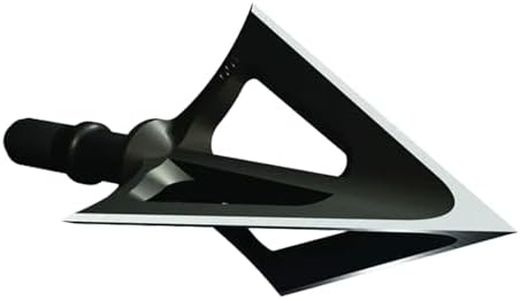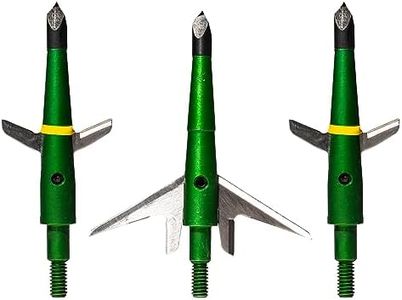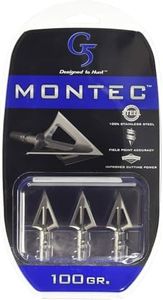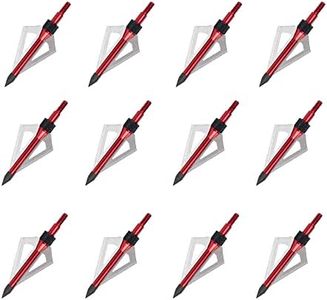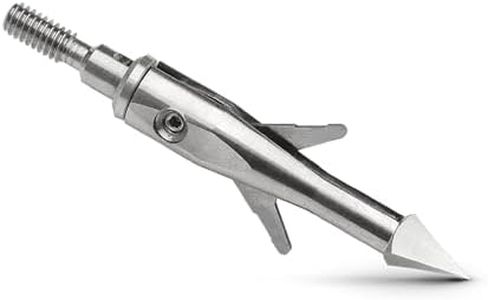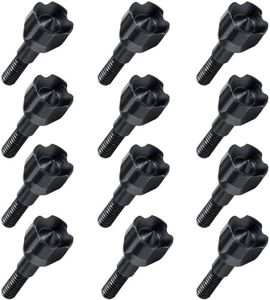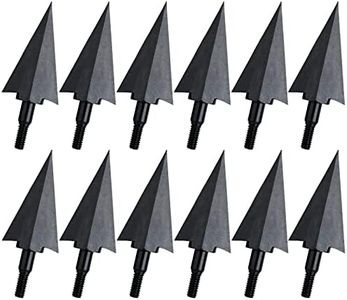We Use CookiesWe use cookies to enhance the security, performance,
functionality and for analytical and promotional activities. By continuing to browse this site you
are agreeing to our privacy policy
10 Best Mechanical Broadheads
From leading brands and best sellers available on the web.By clicking on a link to a third party's website, log data is shared with that third party.
Buying Guide for the Best Mechanical Broadheads
Choosing the right mechanical broadheads is essential for bowhunters looking for effective arrow performance, clean kills, and easy penetration. Mechanical broadheads have blades that expand upon impact, increasing cutting diameter and typically enabling easier flight similar to field points. The key to the best fit is understanding your bow's power, the species you're hunting, and how each broadhead's features match your shooting style and needs.Cutting DiameterCutting diameter refers to the width of the blades when fully deployed. It is important because a larger cutting diameter can leave a bigger wound channel, which typically means better blood trails and quicker recoveries. Cutting diameters usually range from about 1 inch to over 2 inches. Smaller diameters are often favored for better penetration, especially for lower draw weight bows or tougher animals. Larger diameters might work better for high-speed bows and for hunting medium-sized game where maximum tissue damage is desired. Match your choice to your bow’s draw weight and the type of animals you’re pursuing.
Number of BladesBroadheads commonly have two, three, or even four blades. More blades generally mean more cutting surface, which can help with blood tracking, but may slightly reduce penetration as more blades encounter resistance. For hunters prioritizing deep penetration, like when pursuing larger game, two-blade options may be better. If maximizing wound channel and blood trails is the goal, three- or four-blade designs can be preferable. Consider your quarry and what's most important for your hunting situation.
Deployment MechanismThe deployment mechanism is how the blades open on impact, and it affects reliability and flight. Some broadheads have rear-deploying blades that swing open from the back, while others have front-deploying or over-the-top mechanisms. Rear-deploying designs often provide very consistent flight and wound channels, while over-the-top mechanisms tend to open a little sooner but may have a slightly different entry wound. Test your chosen broadhead with your setup to ensure the deployment style works reliably with your arrow speed and impact force.
Blade Sharpness and ThicknessBlade sharpness determines how easily the broadhead can cut through tissue, while blade thickness relates to durability and resistance to bending or breaking. Thicker, sharper blades are desirable for larger or tougher animals, as they stay intact and effective on impact. For small game or if you shoot slower bow setups, moderately thick and sharp blades can provide a good balance of durability and penetration. Always ensure your broadheads are razor-sharp before use for the most humane kills.
Weight (Grains)Mechanical broadheads are commonly available in various weights, measured in grains (usually 100gr to 125gr). Heavier broadheads can increase penetration and are beneficial for hunters who value deep entry, especially on larger game. Lighter broadheads might fly faster and flatter, suiting archers seeking maximum range and flatter trajectory. To determine the right weight, consider your draw weight, arrow spine, and intended use—heavier setups for larger game, lighter for smaller targets and longer distances.
Flight AccuracyMechanical broadheads are designed to minimize drag and maintain flight characteristics close to field points. This spec is crucial for consistent accuracy. If you struggle to group shots with fixed-blade broadheads, mechanicals often offer easier tuning and more consistent results due to their compact profile before deployment. When choosing, verify that your arrows and bow promote stable, repeatable flight with your selected broadhead.
